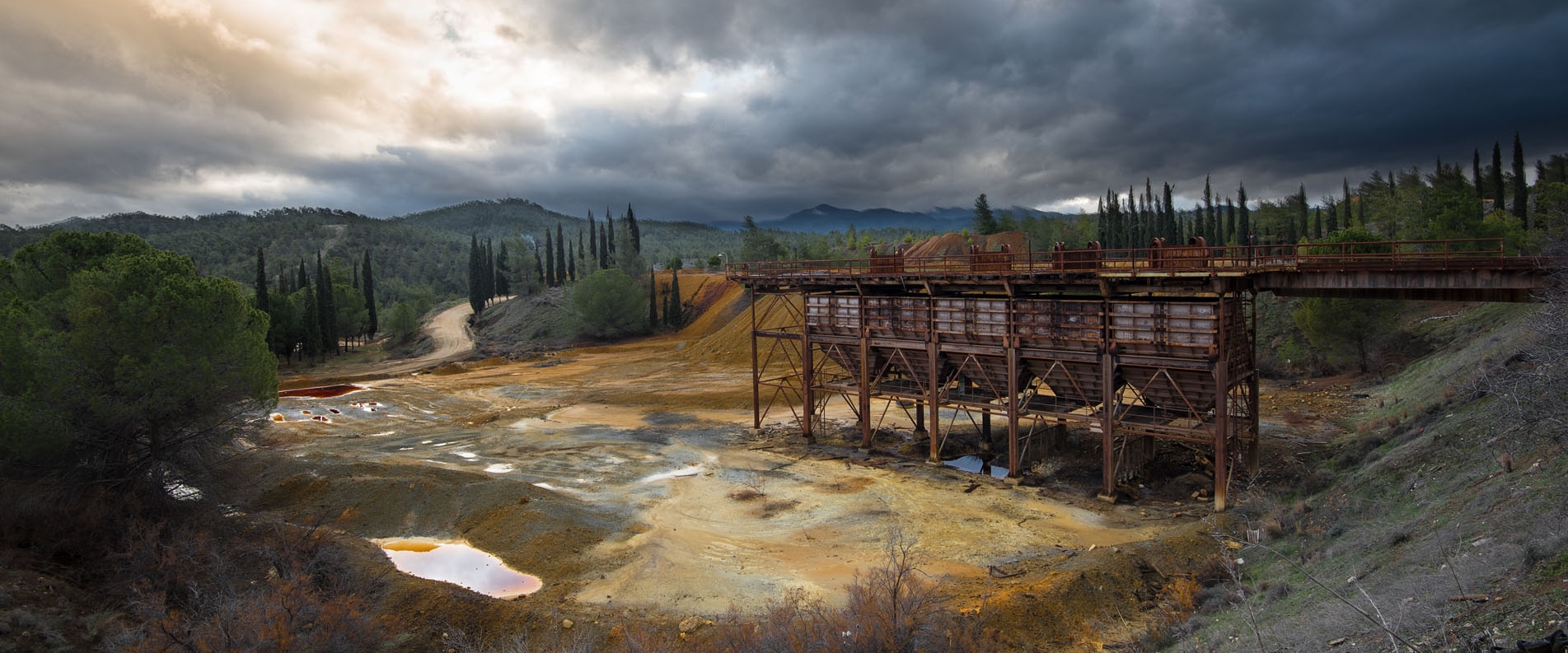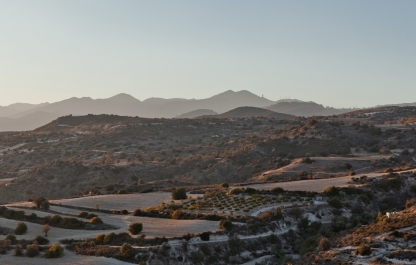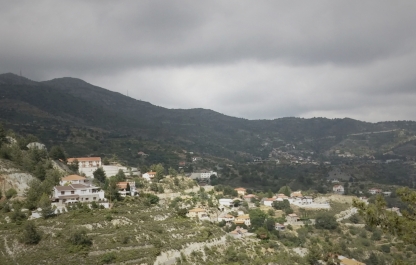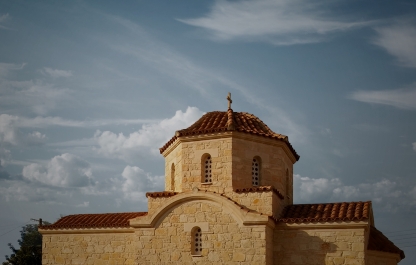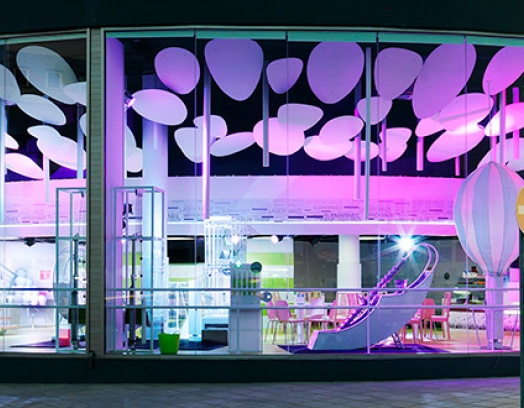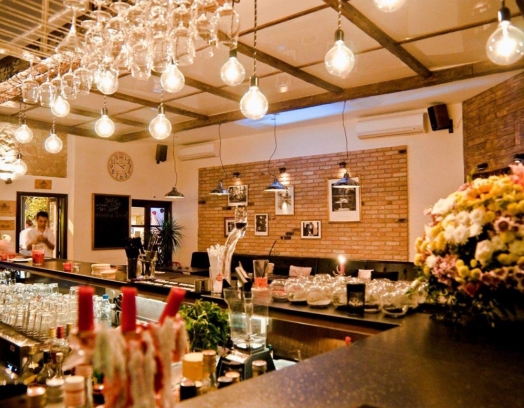There is no reason to remind you about the role of copper in history, economy and culture of Cyprus where it was mined for three thousands years. Being the main engine of progress in historical development of the island, ore and minerals mining was the reason (and quiet a good one) for another powerful countries and folks to try to conquer these territories in the previous ages.
We continue to tell you more about villages in Cyprus while travelling new routes and sharing experiences about our adventures.
Today we are going to tell you about the village where copper, gold and other minerals were mined. It was recently added as one of touristic destinations to the different routes and more and more publications and parts of museum exhibitions are dedicated to its history.
Why this one? Because it is a good example of local’s life in Cyprus in the recent past that kept the traces from the ancient eras in its daily routines.
-
The village we invite you to visit is located 28 km away from Nicosia (to the south-east from the capital) at a height of 390 meters above the sea level and was historically a Greek settlement.
Different sources explain the etymology of its name in different ways; it’s called Μιτσερо in Greek (with the accent on the last syllable).
According to the one version it is believed that the village name “Mitsero” was given to it by the Knights Templar (also known as the Order of Solomon’s Temple) that received the island “from the hands” of King Richard the Lionheart for thousands of gold bezants. Mitsero village wasadded to the list of settlements of the island that should pay tribute to the Order, so called Great Commandaria, in 1191.
Another popular theory that takes its origins in the old handbooks about Cyprus says: the village received its name due to the plant widely growing in this area and called “mikko” by the locals — “Matsikoryda” — narcissus or French daffodil.
What is more the location of the village that is marked under the name “Mikko” in old maps matches with location of Mitsero village that allows to conclude it is the same place.
There are another interesting versions where the name came from.
How about the idea that the name of this place possibly derives from the word that means “tiny” (“μιτσίν”) on the Cyprus dialect of Greek? The main old church of the village was very tiny indeed. Anyway no one knows exactly how it happened in the history.
The nature of this region is also full of surprises.
The first impressive feature: Mitsero has all types of soils that can be found in Cyprus (fertile red soils, poor “white” soils and other mixed types). Same goes for wild growing flowers, plants and bushes that are typical for the East Mediterranean: almost all of them are growing in the neighbourhood of the village.
On the other hand the agro-based industries are not common for this areas: livestock breeding is complicated for a number of reasons (according to the reports there is only one small cowshed and three herds of goats). What is more many crops that are typical for other regions of Cyprus are not cultivated here and the variety is quite poor too and is limited by several fields sown with barley and wheat, gardens with some kinds of vegetables, fruit trees (mostly citrus ones) and beans.
However the citizens of Mitsero using greenhouses for a number of years to plant beautiful flowers, medicinal herbs and aromatic plants.
The last one are an important raw material for the natural based cosmetics produced in the village (lotions, liquid soaps and shower gels, shampoos, rose water, face creams etc.).
The company is called Arissandra Cosmetics Ltd. (Dr. Katsos) and produces aroma mixes, cosmetic oils, herbal teas and blends (14 different recipes) that have except a refreshing, revitalizing or calming also a healing effect (depending on the specific illness or health problems of the person).
Please, keep in mind that all the tea blends and the combinations of ingredients need to be picked up carefully for reaching active and the most positive impact on the human body.
So as we’ve already said Arrisandra specializes not only on herbal teas but also on natural-based cosmetics, skin care and other various products to maintain health and beauty.
The main part of the raw material used for production comes from plants that are growing on the company plantations near Mitsero village.
The experts control the harvesting process that is held at the most optimal time of the year for better effect and pulling out a flavor and scent of flowers and herbs.
Brand contacts: (+357) 22634366, n.katsos@yahoo.com
Now let’s speak about the village
The climate of this place is also unique in his own way: Mitsero is known by its much colder winters and hotter summers comparing to nearby villages. The reason of it is the high humidity: the village is located in the area, which several rivers and mountain streams flows through.
According to the recent climate researches, air streams in this areas cool off quite fast while going up and circulating from the Troodos mountains picks to the foothills and bring the cool air to Mitsero where it gets trapped because of the nature of the terrain. This also explains the summer heat during the season: the movement of the air streams is limited, so they heat up but stay trapped between the mountains and the valley with several rivers flowing on it.
Some people come to Mitsero for hunting: there are large populations of hares and partridges; others — for picking up mushrooms (lots of them grow in nearby pine forests).
We have to warn all the fans of hunting, who want to join this activity along with the locals. The reason is that except the animals and birds that is allowed to hunt in certain amounts there are different species of birds including rare ones that are nestling right here, in Mitsero: except ravens and owls you can hear the nightingales singing or watch swallows and swifts up in the sky or even a soaring eagle.
Please, try to not disturb them and hunt consciously: many of them feed on the species people also hunt for, but it is more important for their lives than for your enjoyment.
-
This region is widely known for its natural resources and different types of ore since the ancient times. There were gold, copper, pyrite [1] and other metals and minerals once mined here.
The population of the village was growing constantly despite the many difficulties and challenges we will tell you about a bit later. However the Cypriots left Mitsero just like many other people left their villages and moved to the cities or even abroad [2], searching for better life, there were new population flows in Mitsero: the workers with their families came to the village from other regions and even other countries.
According to the historical sources 40 men born in Mitsero, along with other Cypriots, took part in military actions (as a part of British troops) during the World War II.
After the extractive industries in the former mines resulted in the decline, there are only about 800 people living in Mitsero nowadays.
-
The ecology of this region also has its features. It’s not a secret that mining industry (especially in the past decades and centuries when the mining was held using the severe methods that had a devastating effect on the local ecosystem) causes serious damage to the environment.
That’s what happened to Mitsero too. The profit went to foreign companies that received also the lion’s share of the benefits from mining while the miners dealt with hard and exhaustive work having health issues because of constantly poisoning with toxic dust (they often used the explosions for deepening the tunnels and mines).
The fact the entrepreneurs were realizing the mines reached the limit made it even worse. They went away in a hurry, leaving behind these wounded places, piles of wasted slag, old and broken vehicles and machinery and poisoned soil no plants can grow on for a long time.
The whole situation began to change very recently…
You probably already read our article on the traditional stone construction in Cyprus and its features.
So the citizens of Mitsero preferred to build their houses from unburnt bricks (brick clay mixed with grounded hay or grass dried in a special wooden box — you can find the information about the whole technology in various local history museums of the island) instead of raw mountain stones to protect the building against the earthquakes. The roofs were made of tiles burnt by locals. As a rule the mud floors stayed uncovered. Also the life conditions in Mitsero were tough because of the harsh continental climate with extremes of temperatures and earthquake-related hazards. Heavy rains and snowmelt of the previous years (according to the historians — till the end of the 1950es) were another danger that brought serious consequences as river flooding, waterlogging or even flooding.
Taking into account all these difficulties it is obviously not a random choice that Archangel Michaelbecamethe Saint Patron of the village. The main village three-nave church with the roof covered with wood shingles was built in his honor.
Let’s speak more detailed about local sights that are worth to visit while you are in Mitsero.
The Blood Lake of Mitsero (or the Red Lake, λίμνη της Κοκκινοπεζούλας on Greek) is one of the local attractions the Cyprus is famous for. You can read about the lake and its certain reputation in this article. You probably have heard about it before or seen its numerous pictures on the Internet.
There is not so much to add to all this information, only that there is nothing mystical connected with this place…or almost nothing. It’s not only the deep red colour of the water changing during the day that makes a strong impression on the visitors. Those who see the lake for the first time are amazed by cracked ochre red soil that reminds the Martian landscapes;the lack of common vegetation on the lakesides completes the image.
If you tell the locals you want to visit the lake, they will warn you against swimming in it. The reason is also far from any mystical stories: because of the mining works that were held nearby the ground water that flows into the lake contains iron and copper oxides which makes the water unsuitable for any kind of life species. However there are several small rivers that also flow into the lake.
You can leave the car at the site on a high ground from where you can observe the whole valley and take some photos. Today the lake and nearby areas are a geopark under the protection of UNESCO: now you can witness the scares that the belief in technical progress multiplied by common greed left on the nature and imagine the historical development of the country at this period of time.
Do not forget to visit another “sight” not far from the lake that will probably put you in the sad mood too: “graveyard” of the old mining machines and vehicles.
Of course we have mentioned not all the objects that are also a part of this “memorial complex”.
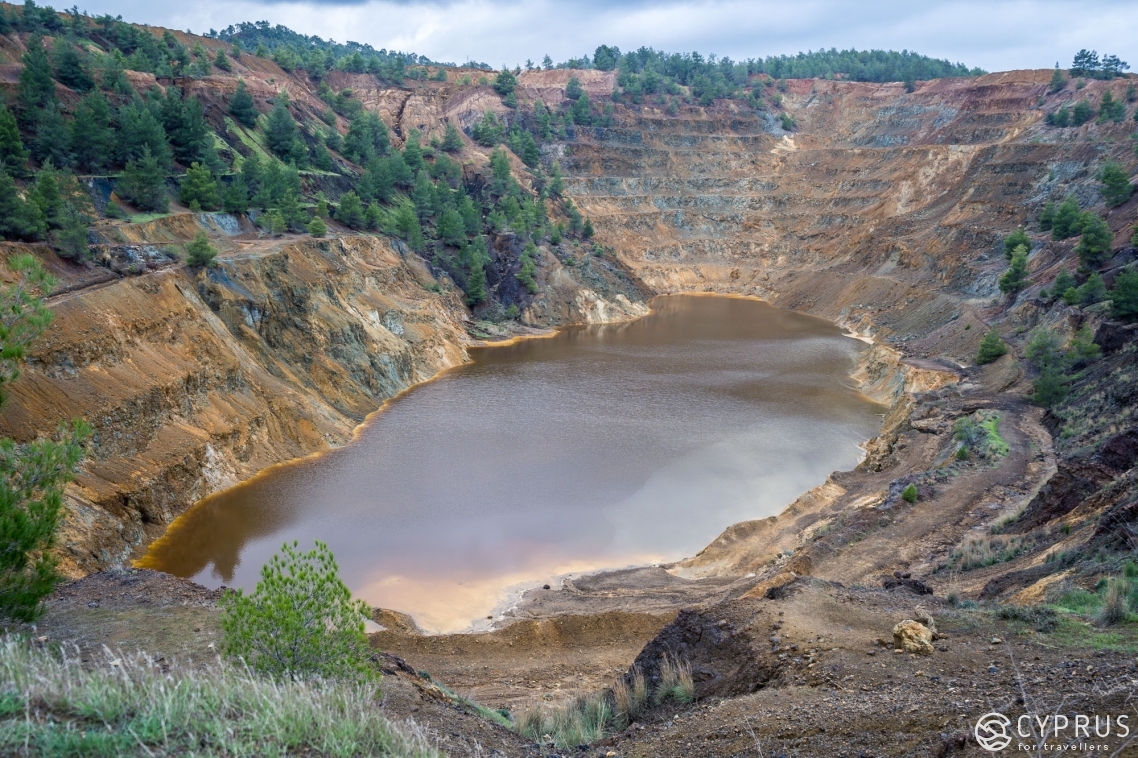
The mines despite their “sinister” appearance are in fact just a place where the works were held: tunnels and vertical shafts were used since the beginning of 1940es for sulphide ores and sulfur extractions. You will find them heading to the west from Mitsero village.
The exploration of the mineral resources in this region began even in the ancient times (in VII and VIII BC) but the industrial flourishing and boom time of the mining works started in modern times, in 1970es.
Further processing and refining of ore have been made at the concentration plant in Mitsero village. The ore refined after the first processing was sent to Vasilikos port from where it was exported to other countries.
Except the abandoned shafts (Kokkinogia mines) you will also see the remains of the elevator system and a part of the rail line the mine carts with ore rode on.
Here you will find sorrow lines by famous Cypriot poet Costas Montis (1914-2004, born in Famagusta) engraved on the stone near the entrance:
Speaking about mines, there is an old abandoned gold mine (on Rodanos Street) to the north-east from Mitsero that was actively excavated in 1928-1944 [3].
You will also find a recreation and picnic area (Gefiri tis Panagia picnic area) on the route from Mitsero to Platanistasa village (E905-906 route from Peristerona village). It’s quite small but picturesque place with capacity of 100 people that is located at a height of 500 m above the sea level.
We will not go into the details describing this place. All we will say is that like in other picnic areas and camping places there are safety rules that must be followed to avoid wildfires and environmental pollution. The visitors should not to litter; the campfires are prohibited: there are specially designated places for those who want to make a barbeque [4] nearby the fountains with drinking water.
Remember that you are guests in Cyprus and all the natural resources are under State protection. So please, try to not walk deep in the forests, do not break the branches of the trees, do not pick up flowers or other plants (because some of them are unique and endemic species that grow only on the island) while walking, enjoying fresh air and admiring the views.
We are kindly asking you do not make too much noise during your stay in the nature — do not disturb the woodland creatures and do not bother other people who also want to enjoy the picnic on a sunny day at the same place.
Please, note: if you are witnessing the starting wildfire or another dangerous situation that requires an urgent attention, call 1407 immediately (telephone line of a 24-hour Fire Service, calling is free of charge).
Website of the village (only on Greek): www.mitsero.org.cy
How to get to Mitsero:
From Nicosia by car: choose the road toward Deftera village or Archangelos district than drive the E903 route to Arediou — Malounta; turn to the right at the sign to Agrokipia (E905) and follow the sign to Mitsero. The whole trip will take about 40 minutes.
From Limassol: head from Mesa Geitonia (A1) through Ayia Fyla (E110) and continue through Kalo Chlorio and Zoopigi (it will take about 1 hour and 15 minutes). After Ayios Theodoros follow the sing to Palaichori and Apliki villages (on E903) and after Malounta village turn to the left following the sign to Agrokipia and Mitsero villages.
And that concludes our trip for today but new roads and new interesting places are already waiting for us.
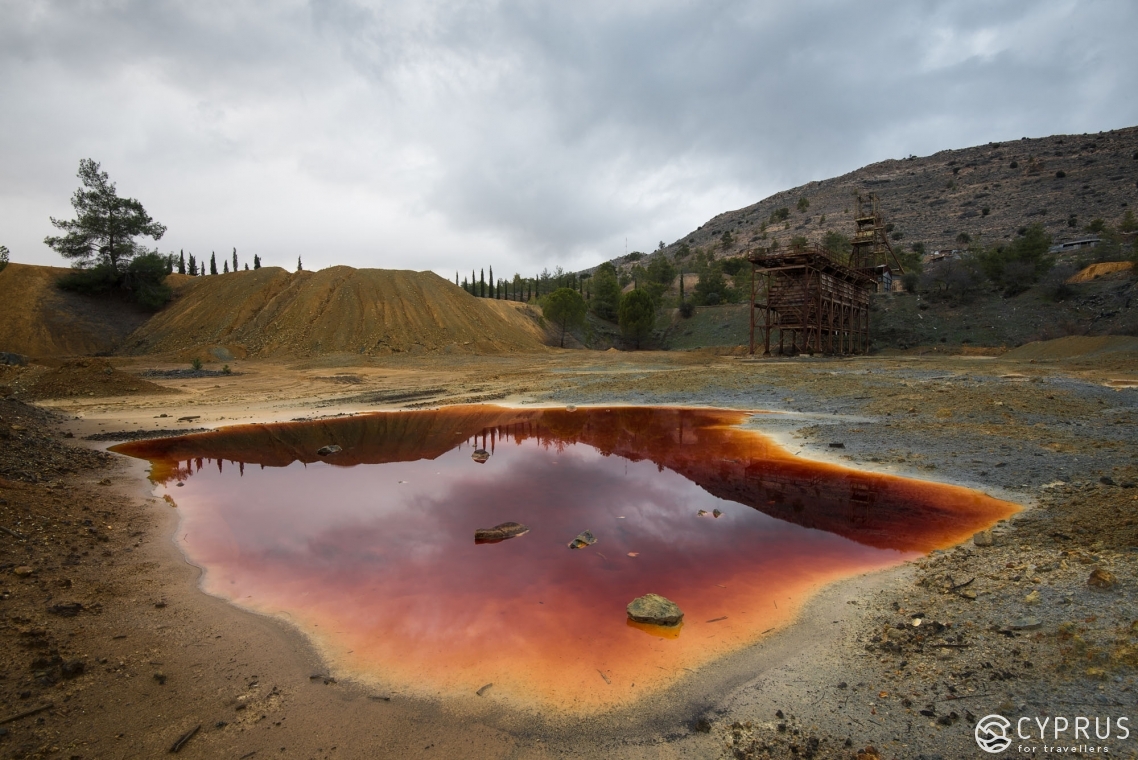
Stay with us and up to new meetings!
[1] Many people know about some characteristics of gold and copper. But what is pyrite? Today it could be found as a decorative addition in the geological collections and even used as a part of some jewelry pieces. The ancient Greeks called pyrite in a very poetical manner — “fire stone”, but there is also a very ironical name for it — “fool’s gold”. Pyrite was a valuable mineral in past eras: because its ability to make sparkles on impact it was widely used in the flintlocks.
People have learnt how to extract sulfur and sulfuric acid from pyrite and make iron vitriol on its basis later. Today this mineral is not so widely used and remained mostly as one of the additives in cement production.
It is known that pyrite is easily mistaken for gold but there is an obvious connection between them: the fields of pyrite often point out that there are the gold strikes nearby. It’s a common case that golden nuggets have slight inclusions of pyrite inside them.
Cyprus is the source of one of the most huge pyrite deposits in the world.
[2] An interesting fact: in the first third of XX century most Cypriots headed mainly to Egypt in their search for work (to Alexandria, Cairo and other cities) but at the end of 1940es and until the beginning of 1970es they preferred to immigrate from the island to the Great Britain, Australia and USA.
[3] In our previous article you may have read about Palaichori and Apliki villages that the local community discuses an initiative to reconstruct the old mines and development plans of the excavated territories during the industrial revolution in order to create historical sights and reserves.
If you are interested in this theme, you can read more about it in the Greek source published by “Politics” here (the article by Maria Panayiotoufrom 12th of March 2017).
[4] Please, keep in mind that having a barbeque is strictly prohibited in some areas like for example Athalassa National Forest Park in the southeast of Nicosia or picnic area near Asinou and Nikitari villages.

